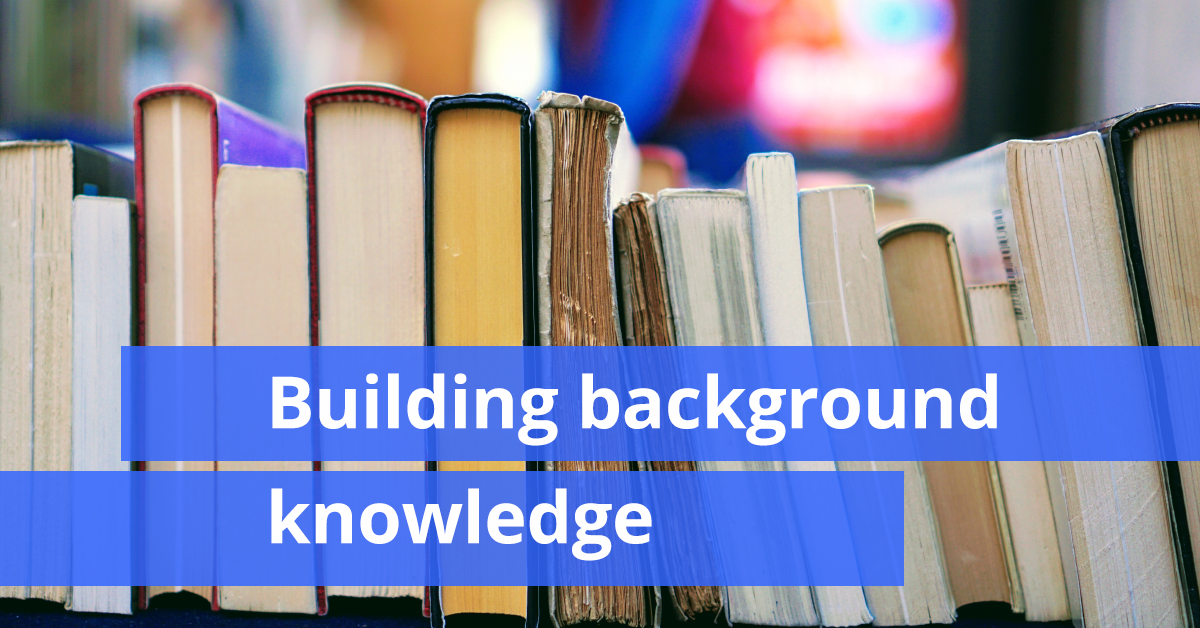
Another barrier to comprehending text is the lack of background knowledge. It is much easier to understand what we read when we have some knowledge of the topic. This is, of course, something of a Catch 22 as background knowledge is acquired by reading, something that struggling readers are reluctant to do. Background knowledge is also acquired through lived experience but given the short time that our students have been alive, they may not have had either the time or the opportunities to develop background knowledge.
Background knowledge not only gives us some of the vocabulary we will encounter but prepares us for the information, ideas and concepts in the text. Background knowledge acts a bit like glue to which new knowledge sticks.
It is a common and good pedagogy to start with and value, what students already know about a topic. This is generally referred to as activating prior knowledge. However, it is often done by posing a question to everyone that can only be answered by a few. A question such as, ‘Who knows or remembers anything about …?’ is a typical question asked at the beginning of a lesson or before a reading. A few hands go up quickly (the same few whose hands went up in the previous lesson on previous days) and everyone else sits there feeling excluded right from the opening minutes of the lesson. It is important that if you are trying to find out what students know, you find out what ALL students know, not just the few who can answer the questions.
Anita Archer has a couple of excellent techniques for finding out what all students know. She suggests posing the question but not taking answers immediately.
- Pose the question and give the students thinking, pairing and sharing time. Many of you will recognise this as Think, Pair, Share – an oldie but a goodie. The teacher moves around the room ‘eavesdropping’ into the students’ conversation. Anita records what she hears with the name of the speaker next to the comment. She then shares this with everyone. ‘I heard Mary say …; John agreed with Mary when he said …; Another point of view I heard was … and Peter said this,' etc
- Students can write down what they know about a topic in bullet points. Anita moves around the class putting a mark next to what some students have written. She then brings the class together and asks anyone who has a mark on their paper to stand up. These points are then shared with everyone. I particularly like this one as it is an opportunity to engineer out incorrect or misleading information.
There are a number of strategies for building background knowledge in Hooking Students into Learning … in all curriculum areas in the Before Reading Strategies Section (pgs. 2-27).
For a more detailed explanation of these and other effective ways to build background knowledge, contact logonliteracy. We can come to your school and provide relevant and engaging PD.
This is part of a series of posts focused on effective reading in the high school classroom. This series includes practical tips teachers can add to their lesson plans.
Read the other posts:
- Using the Flesch Kincaid Readability Index
- Finding different texts with the same topic and level of difficult
- The benefits of pre-teaching the vocabulary
- Using Rewordify to teach vocabulary





